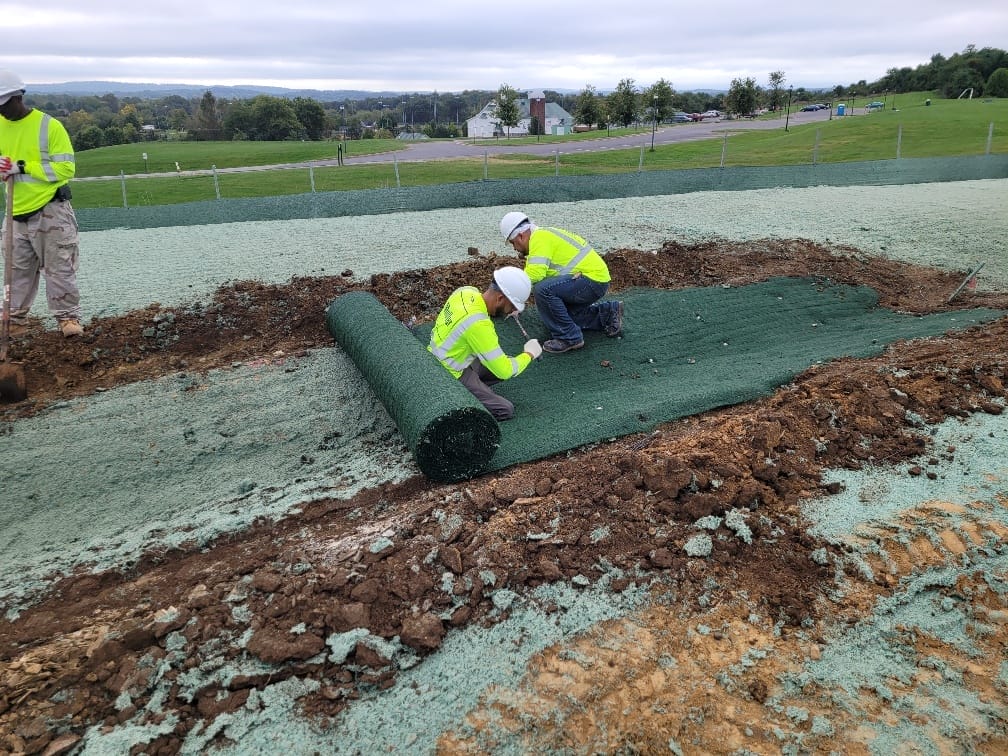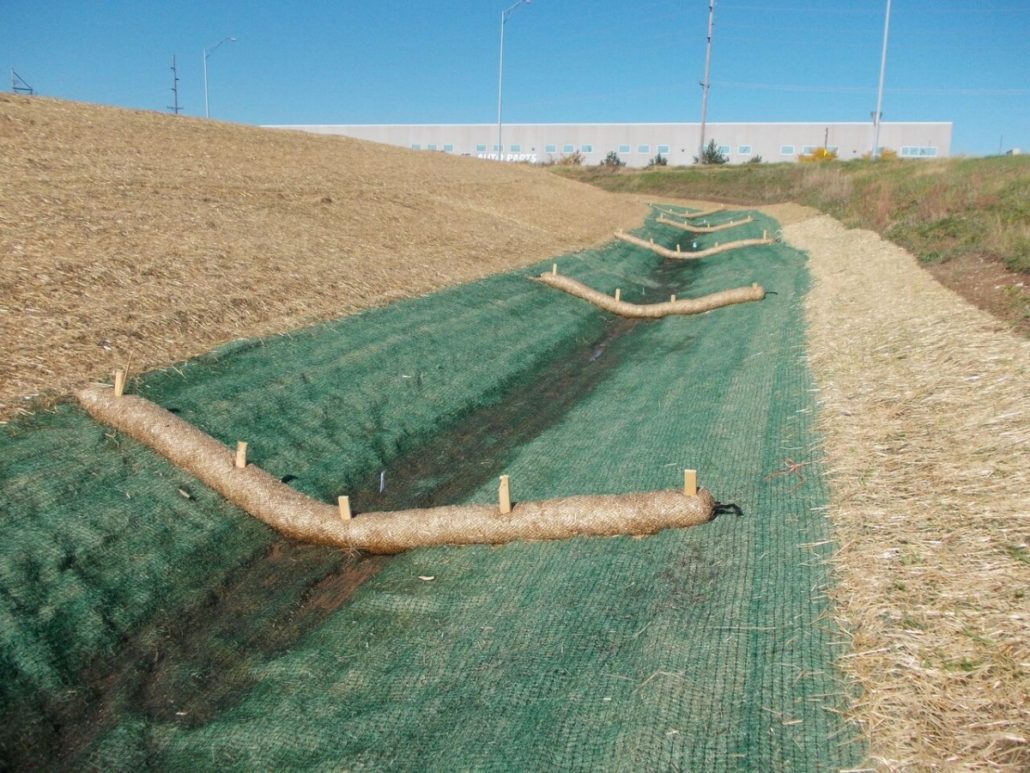Memphis Erosion Control Solutions Memphis TN: Your Neighborhood Erosion Control Experts
Best Practices for Disintegration Control in Building Projects
Are you servicing a construction project and concerned about disintegration control? Look no more! In this write-up, we will guide you with the very best practices for avoiding erosion on your website. You'll discover five vital methods, efficient sediment and overflow management techniques, essential considerations for incline stablizing, and ideas for securing plants and soil. We'll additionally explore the value of executing proper drainage systems. Prepare to deal with disintegration head-on and make sure the success of your building task.
5 Essential Disintegration Control Techniques

To properly manage erosion on your construction website, you'll require to carry out essential strategies such as slope stablizing and sediment control procedures. Incline stabilization is essential in preventing soil disintegration on steep slopes. You can attain this by utilizing approaches like terracing, which involves producing straight steps on the incline to reduce water circulation and promote the absorption of rain. An additional reliable method is making use of erosion control coverings or mats, which are put on the incline and aid keep soil fragments while permitting vegetation to grow. Debris control procedures are also essential to avoid sediment overflow into close-by water bodies. One efficient technique is the installment of silt fencings along the border of the building and construction website. These fencings serve as obstacles, recording sediment-laden water and permitting it to clear up prior to it gets to the water bodies. Additionally, you can use sediment containers, which are momentary retention fish ponds created to catch debris and allow water to slowly drain off. Applying these necessary disintegration control methods will certainly aid decrease the adverse ecological effect of your construction project and guarantee compliance with guidelines.
Reliable Debris and Drainage Administration

You can effectively manage sediment and drainage in your building job by carrying out correct disintegration control actions. Debris and drainage monitoring is crucial to avoid disintegration and protect the surrounding environment. One effective action is the installment of silt fencings along the border of the construction website. These fencings aid to contain sediment and prevent it from entering neighboring water bodies. An additional essential practice is the application of disintegration control coverings or mats. These blankets offer a protective layer on bare soil, minimizing the effect of rainfall and avoiding disintegration. In addition, the use of sediment basins or debris traps can assist to capture debris and avoid it from getting in stormwater systems. Routine upkeep of these procedures is crucial to guarantee their efficiency throughout the building and construction task. This consists of cleaning and evaluating debris containers and on a regular basis changing silt fencings and disintegration control blankets as required. By carrying out these erosion control measures, you can successfully manage debris and drainage in your building task, lessening the effect on the setting and abiding with governing demands.
Trick Considerations for Slope Stabilization
When thinking about slope stabilization, it is essential to analyze the terrain and recognize possible areas of instability. You need to meticulously check out the slope's attributes, such as its drainage, angle, and composition patterns. Look for signs of erosion, such as exposed origins, fractures, or down soil. These indicators can give you an idea of where stablizing measures might be required.
An additional choice is to grow greenery on the incline, as the roots can aid anchor the dirt and control erosion. In addition, setting up erosion control coverings or floor coverings can provide prompt defense while plant life ends up being recognized.
It's critical to frequently monitor the maintained slopes to guarantee their performance. Watch out for any kind of signs of motion or disintegration, and take instant activity if necessary. Normal maintenance, such as checking and fixing any broken actions, is likewise crucial to guarantee lasting stability.
Best Practices for Greenery and Dirt Security
If needed,One reliable way to secure greenery and soil on inclines is by frequently examining for indicators of disintegration and taking prompt activity. By being positive and watchful, you can prevent more damages and guarantee the security of the slope. Beginning by evaluating the incline for any type of indicators of disintegration, such as revealed origins, bare soil spots, or sediment buildup near the bottom. If you discover any one of these indicators, it is important to attend to the issue immediately. Implement disintegration control steps such as setting up erosion control coverings, mulching, and even creating maintaining wall surfaces if needed. Furthermore, planting plants can dramatically aid in supporting the soil. Choose native plants that have deep root systems, as they are extra reliable in stopping erosion. See to it to routinely evaluate the wellness of the plant life and provide necessary upkeep, like watering and feeding. Remember, disintegration can swiftly intensify and cause extreme damage, so it's vital to address it as quickly as feasible. By taking proactive actions and consistently monitoring the incline, you can protect the vegetation and dirt, guaranteeing the long-term security of the area.
Carrying Out Correct Drainage Solutions
When it comes to taking care of water circulation and protecting against erosion, understanding these elements is important. Steeper slopes can lead to much faster water flow, increasing the danger of erosion and flooding. click here for more info On the various other hand, gentler inclines allow water to flow a lot more gradually, minimizing erosion capacity.
Soil type likewise influences water drainage system layout. Various soil types have differing degrees of leaks in the structure, affecting how water is absorbed and drained. As an example, sandy dirts have a tendency to drain faster because of their rugged go to website appearance, while clay soils have a slower drainage rate due to their portable nature. Understanding the soil type aids in choosing suitable drainage methods, such as making use of permeable materials or installing French drains pipes. Additionally, considering the dirt qualities helps prevent waterlogging, which can lead to inadequate plant growth and damages to structures.
Conclusion
Finally, when it comes to disintegration control in building and construction projects, you should comply with these finest techniques. Apply effective sediment and runoff monitoring strategies to prevent pollution. Take into consideration slope stablizing techniques to ensure the security of the website. Shield greenery and soil by making use of proper actions. Finally, develop appropriate drainage systems to take care of water flow. By adhering to these crucial methods, you can properly regulate erosion and make sure the success of your building project.
To properly regulate disintegration on your building and construction website, you'll need to carry out vital strategies such as slope stablizing and debris control procedures. Incline stabilization is vital in stopping soil disintegration on steep inclines. One more reliable strategy is the usage of disintegration control blankets or mats, which are positioned on the incline and aid maintain soil fragments while enabling plant life to expand. Another choice is to plant plants on the incline, as the roots find here can aid anchor the soil and control erosion. Implement disintegration control procedures such as setting up disintegration control blankets, mulching, or also creating maintaining wall surfaces if needed.